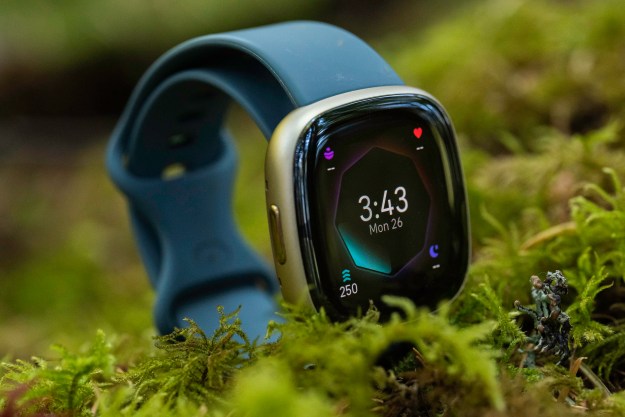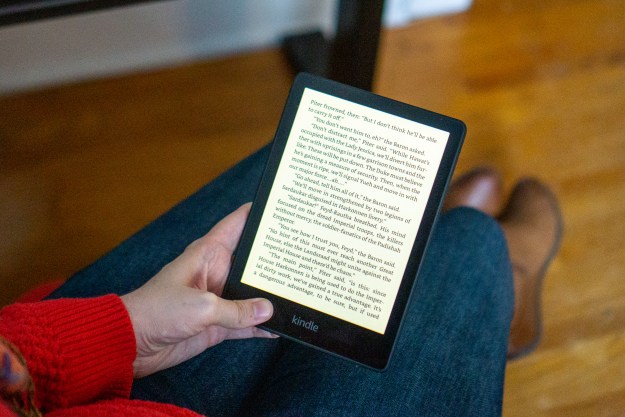
Now that both the Justice Department and the Federal Communications Commission have come out against AT&T’s proposed $39 billion merger with T-Mobile, the company is scrambling to find a way to make the deal go through—even as it braces for the possibility of failure. AT&T has withdrawn its merger application from the FCC to focus solely on the Justice Department’s objections to the deal, and reports have AT&T looking to divest itself of up to 40 percent of T-Mobile (potentially to Leap Wireless) to appease antitrust regulators.
Is there any way AT&T could satisfy the Justice Department’s objections to the proposed merger and still wind up with T-Mobile in its pocket? And, if not, what might happen to T-Mobile if the deal falls apart?
The Justice Department’s Case
AT&T says it has withdrawn its merger petition to the FCC in order to focus solely on the Justice Department’s lawsuit against the merger. In part that’s just good business sense, but in part it’s because the Justice Department’s case against T-Mobile is a doozy. First off, although the suit is filed in federal court, it’s not just the U.S. Justice Department: the lawsuit is also backed by a bi-partisan group of eight state attorneys general. That means for the deal to get approval, AT&T has to come up with some formulation of the merger that not only meets the Justice Department’s antitrust guidelines but can also secure approval of the state attorneys general involved. And, in the unlikely event the case gets to court, a federal judge has to be satisfied as well.
The Justice Department’s suit against the deal is basically built on the premise that the AT&T/T-Mobile merger would cut the number of nationwide mobile operators from four to three, thereby reducing competition while reducing choice and raising prices for consumers. For the Justice Department to agree to the merger, any remedy offered by AT&T would have to effectively fulfill or replace the role in the wireless market currently occupied by T-Mobile.
That’s no small feat. First off, T-Mobile currently accounts for about 11.5 percent of the U.S. mobile market. Any “remedy” proposed by AT&T would likely have to create an entity that represented a similar portion of the U.S. mobile market—and that means relinquishing assets to someone other than Verizon Wireless or Sprint. The next-largest players in the mobile market are MetroPCS (which accounts for about 2.2 percent of the U.S. mobile market) and Leap Wireless (which accounts for about 1.5 percent with its Cricket and Jump brands). For a remedy to match T-Mobile’s market share, it would have to expand a combined Leap and MetroPCS by some 2.5 times their current customer base— or make Metro more than four times larger or Leap more than six times larger. That seems improbable.
But that’s just market share. To satisfy antitrust requirements regarding availability and competition, any proposed remedy would have to have a nationwide reach. T-Mobile covers about 97 percent of the U.S. population, but neither Metro nor Leap are nationwide. To expand either (or both) entities to offer nationwide coverage, AT&T would have to surrender considerable numbers of spectrum and operating licenses—which are the real reason AT&T wants T-Mobile in the first place. The more spectrum AT&T has to surrender, the less valuable the T-Mobile deal becomes.
Another wrinkle: Leap and Metro PCS operate CDMA networks, which aren’t compatible with T-Mobile’s existing gear. (C-Spire also operates a primarily CDMA network.) That means T-Mobile’s spectrum licenses—even in areas where these carriers don’t already have a presence—are less valuable to these carriers than they are to AT&T. Offering customers seamless service across mixed CDMA and GSM networks means offering mostly so-called “world phones” that can operate on both networks, leaving existing customers stuck on one side of the fence or the other.
To satisfy requirements regarding consumer choice, any proposed remedy would have to offer a nationwide sales and distribution network—that would include nationwide retailers like Best Buy, Walmart, and Radio Shack but also dedicated retail operations. Further, any remedy for the disappearance of T-Mobile would likely be required to have enough clout to offer exclusive handsets—it probably wouldn’t be enough for a number-four network operator to offer merely a subset of the handsets available to the big players.
Let’s assume, for the sake of argument, AT&T manages to propose creating a new entity with a market presence similar to T-Mobile that satisfies all antitrust requirements. Even if the Justice Department, the states attorneys general, and a federal judge sign off on it, the merger would still face challenges even 50 percent of T-Mobile in hopes of winning approval.
What part of T-Mobile would AT&T sell off? From this perspective, T-Mobile has two primary assets: spectrum and customers. AT&T’s burning desire to merge with T-Mobile is all about spectrum: AT&T wants to expand its network capacity in as many key markets as possible as quickly as it can in order to keep up with Verizon Wireless, and continue to ride the rise of smartphones and mobile broadband. So, AT&T would prefer to sell customers rather than spectrum licenses.
According to the Justice Department’s suit (PDF), a combined AT&T and T-Mobile would represent more than 40 percent of the market in a stunning 97 out of the top 100 major CMAs (Cellular Market Areas) in the United States. Of the top 15 markets where a combined company would have more customers than all other mobile operators combined, Leap Wireless currently operates in 10 of them, including #10 Houston, #20 Seattle/Everett, and #41 Birmingham.
Selling customers ties in neatly with the idea of catapulting the marketshare of a small mobile operator like MetroPCS or Leap Wireless to nationwide status by dropping a bunch of customers on them. T-Mobile currently has about 33 million customers, making 40 percent of that around 13.2 million. Leap Wireless has about seven million no-contract customers, so the shift would make Leap’s customer base about three times its current size. However—assuming all those customers went along with the change, which isn’t a given—it still doesn’t create an antitrust remedy that fills the competitive forces fueled by T-Mobile. And AT&T would still have to find buyers for customers in #7 San Francisco and #9 Dallas-Fort Worth (as well as markets like Honolulu) where Leap has no presence, or where a combined company’s share of the market would be over 40 percent.
So, to make a deal work AT&T would have to sell some T-Mobile spectrum. AT&T can use spectrum sales to dull the anticompetitive impact of the merger, particularly in markets where a combined AT&T and T-Mobile would be a dominant player. However, selling spectrum works against AT&T primarily interest in the deal—so AT&T will part with it only reluctantly.
It’s not clear who might buy T-Mobile spectrum. AT&T can’t sell T-Mobile spectrum licenses to Verizon or Sprint, save potentially in tiny markets where one company or the other has no service or represents only a small portion of the market. In the mobile world, that leaves small mobile operators like Leap, MetroPCS, and C-Spire, all of which seem like a long shot since they’re mainly CDMA, remember, where T-Mobile is GSM and specialized HSPA+.
For a time, some industry speculation centered on Google as a potential buyer of T-Mobile assets; however, Google’s “>rolling out its own satellite-based 4G LTE service (which, incidentally, doesn’t have the potential GPS interference issues of LightSquared), and Comcast has never been a mobile operator and is still working to digest its mega-merger with NBC Universal—which itself barely squeaked by regulators. That leaves operators like CenturyLink—who might be interested, but may not have enough cash on hand to make a major play.
Potential dark horses include overseas network operators. Let’s not forget Verizon Wireless is 45 percent owned by Vodafone. It’s possible—though perhaps not terribly likely—an overseas operator like Spain’s Telefónica (which is the world’s third-largest mobile operator and already has a presence in south Florida) might be interested in stepping into T-Mobile USA.
T-Mobile’s Options
If the AT&T deal falls through, T-Mobile USA will find itself between a rock and a hard place. Parent company Deutsch Telekom will collect a nice breakup fee if the deal collapses, but that money won’t go into T-Mobile USA’s coffers: Deutsch Telekom has been very clear it wants to focus on the European market and won’t be making any more significant capital investments in T-Mobile USA. In other words, if the AT&T merger fails, Deutsch Telekom will leave T-Mobile to wither.
T-Mobile’s options at that point are limited: although the company has pushed its HSPA+ network hard enough to market its data services as “4G,” the company has no path forward to LTE service—it doesn’t have the spectrum licenses to roll out LTE on its own. T-Mobile will also find it harder and harder to convince handset makers to support its unique network—especially as customers likely churn away to LTE networks and carriers that have, oh, the iPhone.
To offer 4G LTE services, T-Mobile would likely have to make deals with the likes of LightSquared and/or Sprint, which has a deal to acquire up to 50 percent of LightSquared’s capacity, and also has reseller agreements with Clearwire, which is itself working to add LTE to its existing WiMax service. Sprint would love to see a scenario where not only does AT&T fail to acquire T-Mobile, but T-Mobile becomes a major customer for Sprint LTE services.
Prior to AT&T’s move to acquire T-Mobile, some industry attention focused on Sprint as a major suitor of T-Mobile, and it’s no secret the companies looked at the possibilities. But a Sprint/T-Mobile deal is not going to happen. First of all, Sprint took itself out of the running in its suit to block the T-Mobile/AT&T merger, where it lays out an antitrust argument that would also preclude Sprint taking over T-Mobile. Sprint essentially argues the reduction of the nationwide mobile market from four players to three—even if the third player were a combined Sprint/T-Mobile—would adversely reduce diversity and competition in the marketplace. Sprint can’t have it both ways before regulators.
There’s also the fact that Sprint doesn’t need another headache: Sprint already operates three separate networks: WiMax, CMDA, and iDEN (which is going away in 2013). Sprint adding a fourth network (LTE) to that mix, in part via LightSquared and possibly Clearwire would create problems. The company doesn’t need the added complication of trying to support GSM and T-Mobile’s unique high-capacity flavor of HSPA+.
Deadlines
Unfortunately for AT&T, the clock is ticking on its T-Mobile deal. AT&T must be able to complete the merger by September 20, 2012 in order to avoid having to pay Deutsch Telekom billions in breakup fees. That’s almost ten months away, but in realistic terms it’s not very much time to craft a new merger agreement, plan divestitures and other conditions to placate the Justice Department, get eight states attorneys general to sign off, get a federal judge to agree, and (if a new national mobile player is crowned or created) gain approvals from state public utilities commissions and other regulators. And that’s not counting fighting off lawsuits from the likes of Sprint and C-Spire to block the merger.
The bottom line: it is unlikely the Justice Department will be satisfied with any deal that leaves only three national mobile operators in the United States, and there doesn’t seem to be any path that would enable AT&T to acquire T-Mobile and create a competitive fourth nationwide mobile provider.
Editors' Recommendations
- It’s late 2022, and Verizon and AT&T still can’t beat T-Mobile’s 5G network
- Old phones will stop working with AT&T and T-Mobile. Here’s what to do about it
- It’s official: Justice Department approves merger between Sprint and T-Mobile


